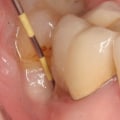Tooth extraction is a common dental procedure performed to address various oral health issues, such as severe decay, gum disease, or overcrowding. While the process is usually straightforward, many patients wonder about the pain associated with recovery and how long it will last. Understanding what to expect after tooth extraction can help you manage discomfort effectively and ensure a smooth healing process. Knowing when to seek professional care is also crucial to avoid complications. Whether it's a routine extraction or a more complex procedure, this guide covers all you need to know about post-extraction pain and recovery.
Typical Duration of Pain
After a tooth extraction, mild to moderate pain is a normal part of the healing process. This discomfort typically peaks within the first 24 to 48 hours following the procedure and gradually subsides over the next few days. Most patients report significant improvement within a week, but the exact timeline can vary depending on factors such as the complexity of the extraction, the tooth's location, and individual pain tolerance.
For simple extractions, pain often resolves within three to four days. However, more invasive procedures, like wisdom tooth removal or extractions involving impacted teeth, may cause discomfort for up to a week or slightly longer.
It’s important to note that while minor swelling and soreness are common, severe or worsening pain could indicate a complication such as dry socket or infection. Practices like Radiant Dentistry provide personalized post-operative care and guidance to ensure you recover comfortably and avoid potential issues.
Factors Influencing Pain Duration
Several factors can influence how long pain lasts after a tooth extraction. These include:
- Type of Extraction: Simple extractions involve removing teeth that are fully erupted, while surgical extractions may require cutting into the gum or bone, leading to a longer recovery period.
- Location of the Tooth: Molars, particularly wisdom teeth, are larger and more deeply rooted, making their removal more likely to result in prolonged discomfort.
- Oral Hygiene: Proper care of the extraction site can promote faster healing and reduce pain. Neglecting aftercare may delay recovery or lead to complications.
- Age and Overall Health: Younger, healthier individuals often heal more quickly than older adults or those with underlying health conditions that may impair healing.
Managing Pain After Extraction
Pain management is an essential aspect of recovery, and there are several ways to alleviate discomfort:
- Medications: Over-the-counter pain relievers like ibuprofen or acetaminophen are commonly recommended. For more severe pain, your dentist may prescribe stronger medication.
- Cold Compresses: Applying ice packs to the outside of your cheek during the first 24 hours can reduce swelling and numb the area.
- Rest and Elevation: Avoid strenuous activities and keep your head elevated when lying down to minimize swelling and discomfort.
- Soft Foods: Stick to soft, cool foods such as yogurt, applesauce, and mashed potatoes to avoid irritating the extraction site.
- Saltwater Rinse: After the first 24 hours, gently rinsing with warm salt water can keep the area clean and soothe soreness.
Following your dentist’s instructions is vital for minimizing pain and ensuring proper healing.
When to Contact Your Dentist
While mild pain is a normal part of the healing process, certain symptoms warrant a call to your dentist. These include:
- Persistent or worsening pain after three to four days.
- Excessive bleeding or difficulty controlling bleeding.
- Swelling that increases instead of subsiding.
- Signs of infection, such as fever, chills, or foul-smelling discharge.
- Numbness or tingling that doesn’t improve, which could indicate nerve damage.
Dentists are equipped to address these concerns promptly, providing additional treatment or advice to ensure your recovery stays on track.
Long-Term Recovery
By the second week after extraction, most patients experience minimal discomfort and can return to their normal routines. However, the extraction site continues to heal for several weeks, during which the gum tissue regenerates and the bone fills in. Maintaining good oral hygiene and avoiding habits like smoking or chewing hard foods during this time can promote long-term healing.
It’s also essential to attend follow-up appointments with your dentist to ensure the site is healing properly and to address any concerns that may arise.
Conclusion
Pain after tooth extraction is a natural part of the recovery process, but it’s typically manageable and short-lived with proper care. Most patients find that discomfort peaks within the first two days and subsides significantly within a week. Factors such as the complexity of the extraction, location of the tooth, and adherence to aftercare instructions can influence the duration and severity of pain.
If you experience persistent or worsening symptoms, seeking professional care is essential to prevent complications and ensure a smooth recovery. Trustworthy dental practices provide comprehensive post-operative support, helping you navigate the healing process with confidence. By following your dentist’s guidance and practicing good oral hygiene, you can ensure a comfortable recovery and protect your oral health for the future.






